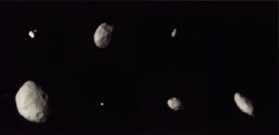This is a composite image of the small moons of Saturn.
Click on image for full size
NASA
Epimetheus
Epimetheus was discovered by R. Walker in 1966. Epimetheus is the 4th closest moon to Saturn. Epimetheus is one of the
small moons, about the size of the city of Los Angeles.
Epimetheus and Janus orbit Saturn together. They are only 50 km (33 miles) apart as they orbit Saturn, which is a little like having two moons in the same city. The fact that they are so close may mean that they are two pieces of what may once have been a single moon.
You might also be interested in:
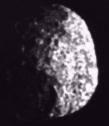
The small moons are too small to be seen, so it is hard to say anything about what they are made of, or what their history might be. Some of the small moons may be little pieces of another, bigger, moon
...more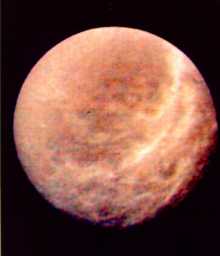
The planet Saturn has a lot of moons. It has a total of // Call the moon count function defined in the document head print_moon_count('saturn'); moons! Saturn also has huge rings which you can see in any
...more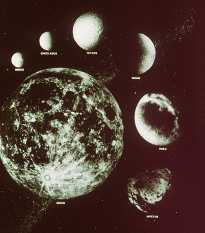
This is an image of the Earth's moon, shown in the lower left, with the icy moons of Saturn. The moons in order, starting from the top left are: Mimas, Enceladus, Tethys, Dione, Rhea, and Iapetus.
...more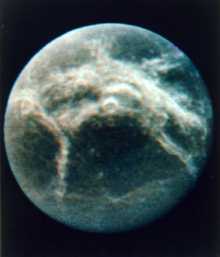
Dione was discovered by G. Cassini in 1684. Dione is the 7th farthest moon from Saturn. It is a small icy moon, lightly cratered, with white streaks across the surface. Dione is about as wide as the Oregon
...more
The surface of Dione does not have many craters, which means that the surface has changed in the past. Instead of many craters, it has wispy white streaks like the ones on Rhea, which go for many kilometers
...more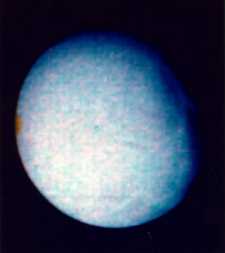
The surface of Enceladus does not have many craters. Instead it has grooves similar to those found on Ganymede. These grooves extend for many kilometers over the surface. The presence of grooves indicates
...more
Helene was discovered on February 29, 1980, by French scientists. Although Helene is very far away, they were able to see this small moon by using a powerful telescope and fancy camera. A few months later,
...more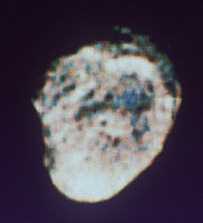
Hyperion was discovered by W. Bond in 1848. Hyperion is the 3rd farthest moon from Saturn. Hyperion is about the size of a large county or small state. One of the main things about Hyperion is its unusual
...more


